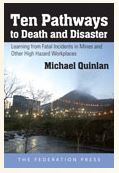Since the release of the 2015 Citi report into the occupational health and safety (OHS) performance of the companies in the ASX200 stick exchange rankings, this blog has received many requests for a copy of the report to assist in the benchmarking of performance. Clearly performance indicators for OHS remain contentious and difficult but this does not need to be the case.
Citi’s recent report stated that key performance indicators (KPIs) should meet three needs:
- “internal monitoring for continuous improvement to reduce incidents;
- benchmarking and sharing lessons within the industry; and
- transparent disclosure to stakeholders.”
Continue reading “National OHS performance indicators needed”


